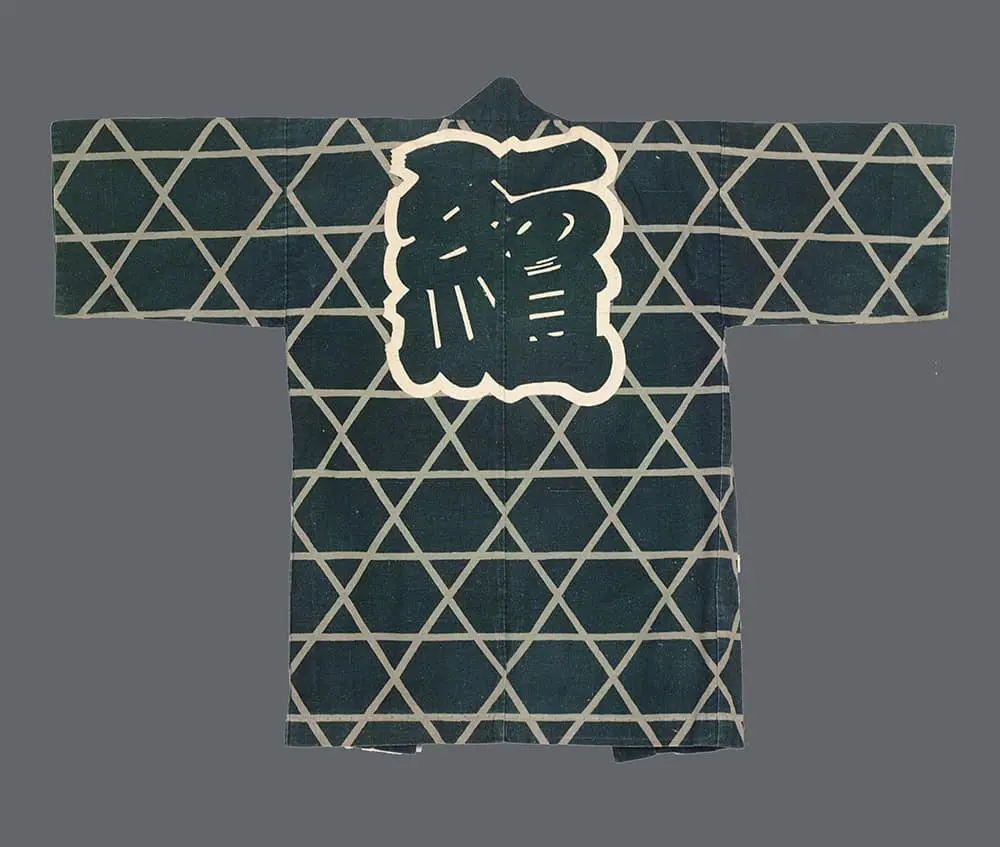This robust hanten exemplifies the intersection of functional workwear design with the emerging modernist aesthetic sensibilities of Japan's Taishō period, representing a fascinating departure from traditional textile patterns toward geometric abstraction. The bold criss-cross lattice pattern, rendered in cream against the deep teal ground, demonstrates a striking embrace of pure geometric form that anticipates the Art Deco movement's emphasis on angular, repetitive motifs and suggests early influences from European avant-garde design reaching Japanese craftsmen. This diamond lattice (shippō-tsunagi variant) traditionally symbolized infinite expansion and continuity, but here it is executed with such graphic boldness and mathematical precision that it transcends its symbolic origins to become a statement of modern industrial aesthetics.
The central cartouche containing Japanese characters serves as both identifying mark and decorative focal point, its scalloped white border creating a dramatic contrast against the geometric field while maintaining the period's fascination with combining traditional calligraphic elements with contemporary design frameworks. The overall composition reflects the democratic spirit of early 20th-century Japanese design, where working-class garments began to incorporate sophisticated visual concepts previously reserved for elite textiles, demonstrating how modernist principles of functional beauty and geometric clarity were filtering through all levels of society.
It measures 46 inches (117 cm) from sleeve-end to sleeve-end, with a height of 34 inches (86 cm).
.avif)










